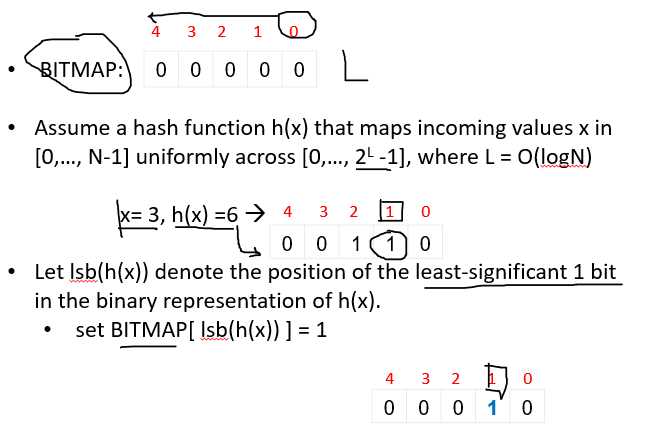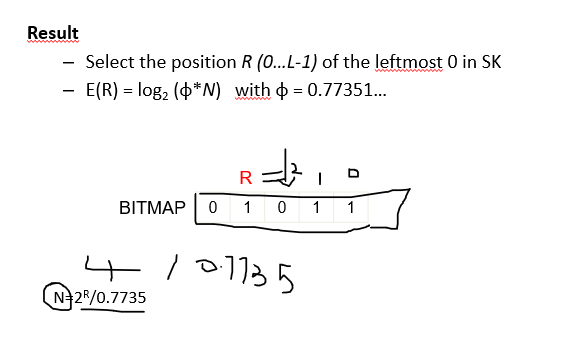 06.Data Stream(W7&8&9)
06.Data Stream(W7&8&9)
What's data stream
A data stream is a real-time, continuous, ordered (implicitly by arrival time or explicitly by timestamp) sequence of items. It is impossible to control the order in which items arrive, nor is it feasible to locally store a stream in its entirety.
Massive volumes of data, records arrive at a high rate
Applications of data stream processing
Stock monitoring (data analysis)
- Stream of price and sales volume of stocks over time
- Technical analysis/charting for stock investors
- Support trading decisions
What kinds of work it could do
Usuage Examples
Notify me when the price of IBM is above $83, and the first MSFT price afterwards is below $27.
Notify me when some stock goes up by at least 5% from one transaction to the next.
Notify me when the price of any stock increases monotonically for ≥30 min.
Notify me whenever there is double top formation in the price chart of any stock
Notify me when the difference between the current price of a stock and its 10 day moving average is greater than some threshold value
Challenges of data stream processing
Case 1: Computation of daily electric power consumption by customer market segment from customer meter data
- Join between several streams
- Join between stream data and customer database
Solution: incremental computation and definition of temporal windows for joins
Case 2: 100 most frequent @S IP adresses on a router
- Maintain a table of IP addresses with frequencies ?
- Sampling the stream ?
Face high (and varying) rate of arrivals
Exact versus approximate answers
Windowing
Definition of windows of interest on streams
- Fixed windows: September 2007
- Sliding windows: last 3 hours
- Landmark windows: from September
Window specification
- Physical time: last 3 hours
- Logical time: last 1000 items
Refreshing rate
- Rate of producing results (every item, every 10 items, every minute, …)
Reservoir sampling
Problem: maintaining a random sample from a stream
- Random sample of size M
- Fill the reservoir with the first M elements of the stream
- For element n (n > M)
- Select element n with probability M/n
- If element n is selected pick up randomly an element in the reservoir and replace it by element n
Random sampling from a sliding window
import random as rd
class ReservoirSample:
def __init__(self, sample_size):
self.__index__ = 0
self.__sample_size__ = sample_size
self.__sample_pool__ = []
# Whether select the item n
def __is_select__(self):
return (rd.randint(1, self.__index__) <= self.__sample_size__)
def pipe(self, data):
self.__index__ += 1
if(self.__index__ <= self.__sample_size__):
self.__sample_pool__.append(data)
else:
if self.__is_select__():
idx = rd.randint(0, self.__sample_size__ - 1)
self.__sample_pool__[rd.randint(0, self.__sample_size__ - 1)] = data
def get_samples(self):
return list(self.__sample_pool__)
## Test code below
reservoir_obj = ReservoirSample(10)
for i in range(1000000):
reservoir_obj.pipe(i)
## Get the final sample result
reservoir_obj.get_samples()Implementation on google colab
Bloom filter
Problem: Given a large set S, check whether a new element i is in the set
- Check if an IP address is in the black list
- Check a login if this is an existing account
Algorithm:
Input: S has m elements from a data stream, memory size n, m>n
Output:
- Returns TRUE -> there is a high chance that the element is in S
- Returns FALSE -> when the element is not in S
Consider a set of hash functions {
Step 1: Initialization
Set all n bits in the memory to 0.
Step 2: Insert new element a
Compute
Step 3: Check whether an element a is in
Compute
Characters:
- Given a large set of element S, efficiently check whether a new element is in the set.
- Bloom filters use hash functions to check membership
- Return TRUE if there is high probability of the element is in S
- Return FALSE if the element is not in S
- False positive error rate depends on the size of S and the size of the memory
Hash (FM) sketch
Problem: Find the number of distinc values in a stream of values with domain [0,…N-1]
- Distinct IP addresses in a router (networking monitoring)
- Number of species in a population
Sampling and windowing may not work well
FM sketch
Classification
Decision tree
ID3 algorithm
Split(node, {examples})
- A
- Decision attribute for this node
- For each value of A, create new child node
- Split training {examples} to child nodes
- if examples perfectly classified: Stop
else: iterate over new child nodes
Split(child_node, {subset of examples})
Ross Quinlan (ID3: 1986), (C4.5: 1993)
Breimanetal (CaRT: 1984) from statistics
A criterion for attribute selection
- Which is the best attribute?
- The one which will result in the smallest tree
- Heuristic: choose the attribute that produces the “purest” nodes
- Popular impurity criterion: information gain
- Information gain increases with the average purity of the subsets that an attribute produces
- Strategy: choose attribute that results in greatest information gain
The performance of split:
- Infomation Gain
- Entropy
The final decision tree
Note: not all leaves need to be pure; sometimes identical instances have different classes
Splitting stops when data can’t be split any further
Decision tree using data stream
Non-additive methods: the example of decision trees
VFDT: Very Fast Decision Trees (Domingos & Hulten 2000)
- Y: discrete attribute to predict
- Elements of the stream
- G(X): measure to maximize to choose splits (ex. Gini, entropy, …)
Hoeffding trees: not necessary to wait for all examples to choose a split
- Maintain
- Wait for a minimum number of examples,
- Split on
- Recursively apply the rule by pushing new examples in leaves of the tree
Clustering

Clustream
- Numerical variables
- 2 phases:
- Online phase: maintenance of a large number of 'micro-clusters' described by statistics of their contents
- Offline phase: use of micro-clusters to produce a final clustering.
- Mechanism to keep track of micro-clusters history
Representation of micro-clusters
- CVF: Cluster Feature Vector (BIRCH)
(n, CF1(T), CF2(T), CF1(X1), CF2(X2), …, CF1(Xp), CF2(Xp)) - n: number of data points
- CF1(T): sum of the time stamps
- CF2(T): sum of the squares of the time stamps
- Supports union/difference by addition/substraction
- Incremental computation (elements are disgarded)


